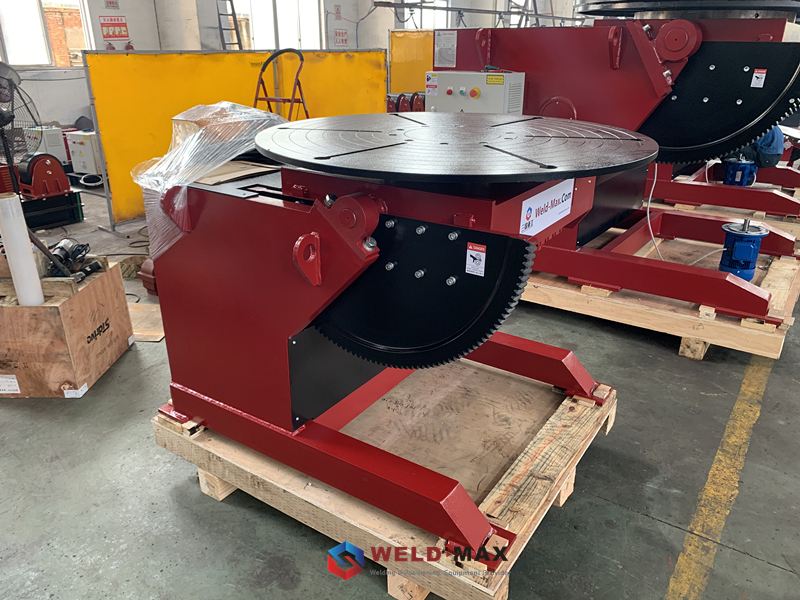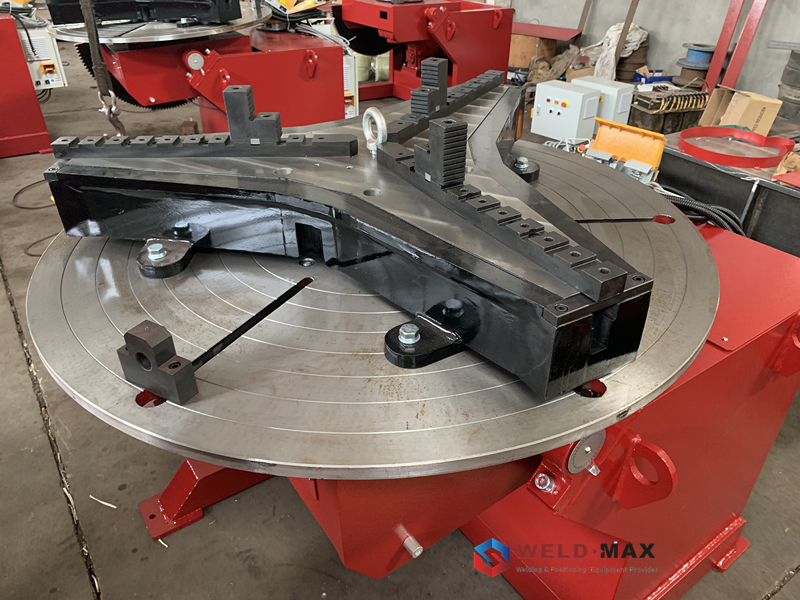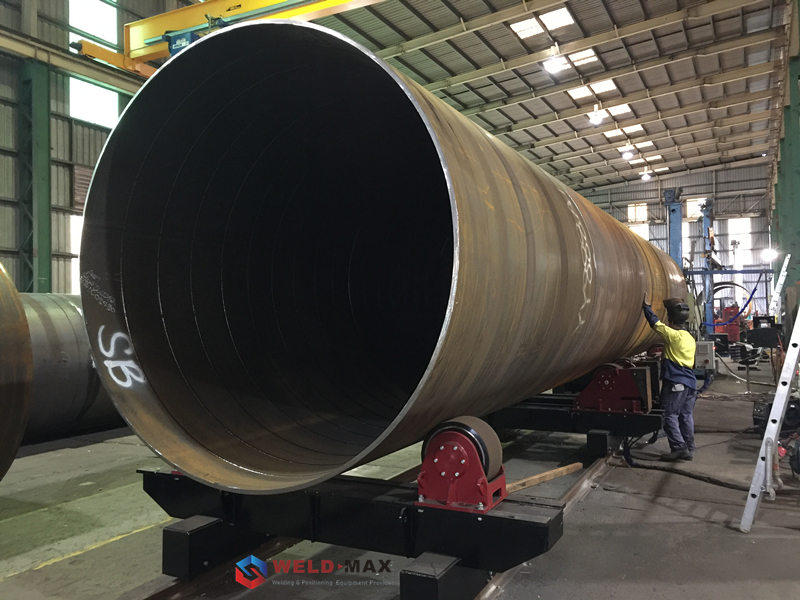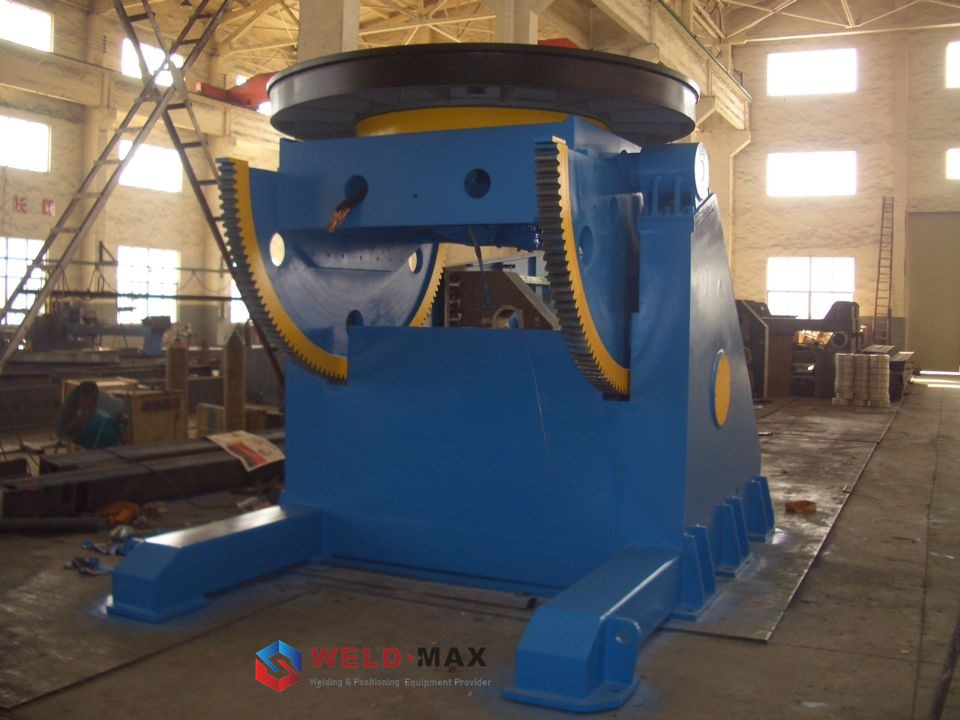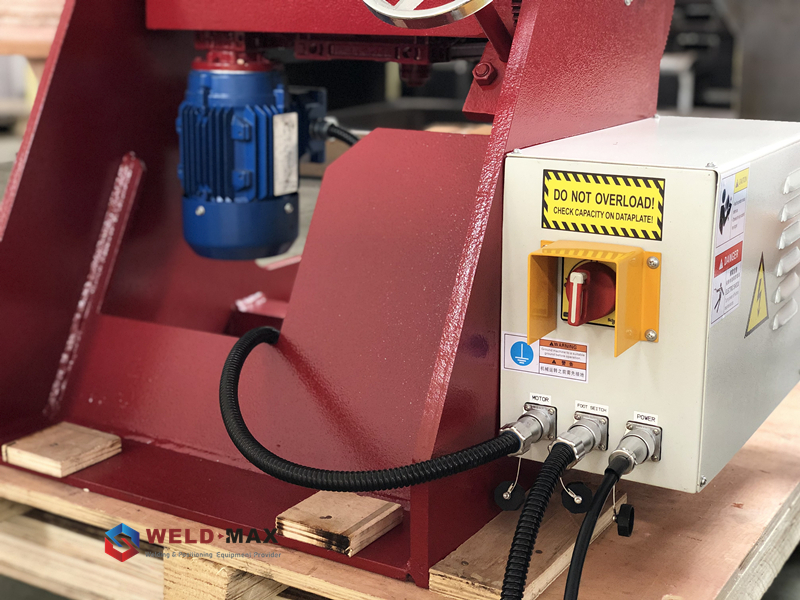When selecting, operating, and maintaining a positioner, welders should consider these five suggestions, regardless of the size of the weldment.
1. Remember the center of gravity (COG)
It is important not only to take the weight and size of the weldment into account when selecting a positioning device, but also to consider how far the weldment’s center of gravity is from the device. The center of gravity refers to the point at which the weldment balances on all axes equally. The point at which the weldment equalizes the pressure on each axis is the COG. The positioner is torqued more when the distance from the device increases. When welders add material and parts to a positioner, the COG changes, so these changes are important to consider.
Variable-speed motors control the table’s rotation. It can be controlled either manually or automatically. Choosing the right positioner motor and control depends on the size and speed required for the desired welding operation.
Motor and control choices will be determined by the positioner manufacturer’s specifications. A welder should make sure the capacity is adequate for the weldment by checking both horizontal and vertical load specifications. It is important that the positioning device can withstand as much force as possible.
2. Attach Weldment Correctly
This point in time is where the weldment would naturally separate from the positioning device, because that is where the weldment is attached. Fixtures for production are intended to be used repeatedly for a particular application. An automatic alignment fixture, such as this one, is permanently mounted to the positioner and is shaped so that it’s easy to align parts.
The three-jaw chuck is often used to attach round parts. When the part is extended from the table, it should not pull away from the jaws. During and after the welding process, the part may expand or contract depending on how hot and how cold it is, which can affect the grip the chuck has on the part.
In sizing the positioning device, consider the weight and distance added by fixtures and chucks. Weldments apply torque to the device when they are weighted, but as the distance between them increases, the torque is multiplied. In a vertical position, a weldment weighing 50 pounds that is 3 inches from the face of the positioning table produces 12.5 ft-lbs of torque. At the mounting surface, the torque increases to 25 ft-lbs if the distance is increased to 6 in. A bigger machine may be needed to handle the increased torque.
There are many positioners that feature slots for bolting the workpiece to the face. In order to prevent shear forces from sliding the part during maneuvering, it is common to weld the part to the positioner. It’s important to note that every one of these methods will work if it’s applied properly, whether it’s standalone or combined.
3. Use Turning Rolls for Cylinders
Turning Roll is an option for cylindrical weldments. Pipes or vessels can be rotated with small turning rolls, either powered or idler-type, to enable downhand welds. The power rolls create even circumferential welds due to their slow rotation. Pipes and vessels with longer lengths can be supported by idler rolls that do not require power. This is often used to connect pipe ends to vessels and to add flanges to pipe ends.
When a round part is extended outward, a roller-type pipe stand and a vertical-faced table positioner provide stability and safety. Two points of contact allow the rollers to distribute the weight evenly so that the COG can be supported.
4. Keep It Flat
If you have a small positioning device, you must mount it on a flat, straight surface to prevent it from tipping. To prevent tipping when or if an unexpected force is applied to the positioner, mounting holes may be used to secure it to a stable surface. It is also essential to secure a positioner mounted on a workbench or stand.
5. Connect Ground Current to the Positioner
It’s best to connect a ground current to the positioner when welding. This prevents the need to continuously remove and reinstall welding clamps since the ground current transfers from the table into the chassis. Grounding is vital to protect electrical parts from damage and make sure that weld deposits are of high quality.
Electric current produced by the welding process needs to be compatible with the positioner. Before bolting the ground cables to the carriage, remove all paint from the cables and secure them tightly.
Send your message to us:
Post time: Nov-24-2021
